What is Carl Jung’s theory of the anima and animus?
What do these two powerful archetypes represent?
And what influential roles do they play in our lives?
In this in-depth guide, we’ll explore these questions and much more.
Let’s dive in …
What are the Anima and Animus?
Anima and Animus are essential archetypes in Jungian psychology.
Psychiatrist Carl Jung writes in The Development of Personality,1The Collected Works of C.G. Jung, Vol. 17.
Every man carries within him the eternal image of a woman, not the image of this or that particular woman, but a definite feminine image … The same is true of the woman: she too has her inborn image of man.
The Anima is Latin for Soul. It represents the feminine aspect of a man’s unconscious.
The Animus is Latin for mind or spirit. It represents the masculine component of a woman’s unconscious.
Again from Jung:2Jung, Conversations with C.G. Jung, 30.
To a man the anima is the Mother of God who gives birth to the Divine Child. To a woman the animus is the Holy Spirit, the procreator.
Anima and Animus represent two powerful archetypes within the collective unconscious.
Defining the Anima Archetype
The Anima animates and gives life. She is the source of life for men. She is the eternal image of woman carried within all men.
The Anima as Muse
Creative geniuses have called her by many names: Muse, Guide, Poetic Voice, la femme inspiritice (the feminine spirit).
In literature, the Anima is expressed as Helen, who inspired the epic battle at the city of Troy. And Beatrice, who was immortalized in Dante’s Divine Comedy.
The Anima as Messenger
The Anima is the home of the virtues residing in the heart of man. She is the gentle carrier of a man’s soul and the gatekeeper of his inner world.
For Jung, the Anima is the messenger between a man’s conscious personality and the collective unconscious—the universal repository of all archetypes.
The Anima as the Source of Meaning
Without a connection to his Anima, a man is without a sense of meaning. She is the mistress of his power and strength.
As Jungian Robert A. Johnson writes in Lying with the Heavenly Woman:3Lying with the Heavenly Woman, 4-5.
Almost all of a man’s sense of value, worth, safety, joy, contentment, belongingness, and happiness derive from his inner feminine nature… Men, in their arrogance, generally think it is their strength, possessions, and dominations that bring them happiness. But it is not so. Happiness is feminine in a man, a feeling quality and generally mysterious to him.
A man hungers for validation in his masculine world but this validation can only come via his feminine side. He searches for this validation to experience completeness.
This search for completeness drives him initially on a quest for a physical woman, but later, on an inner journey to his own feminine nature—his Anima.
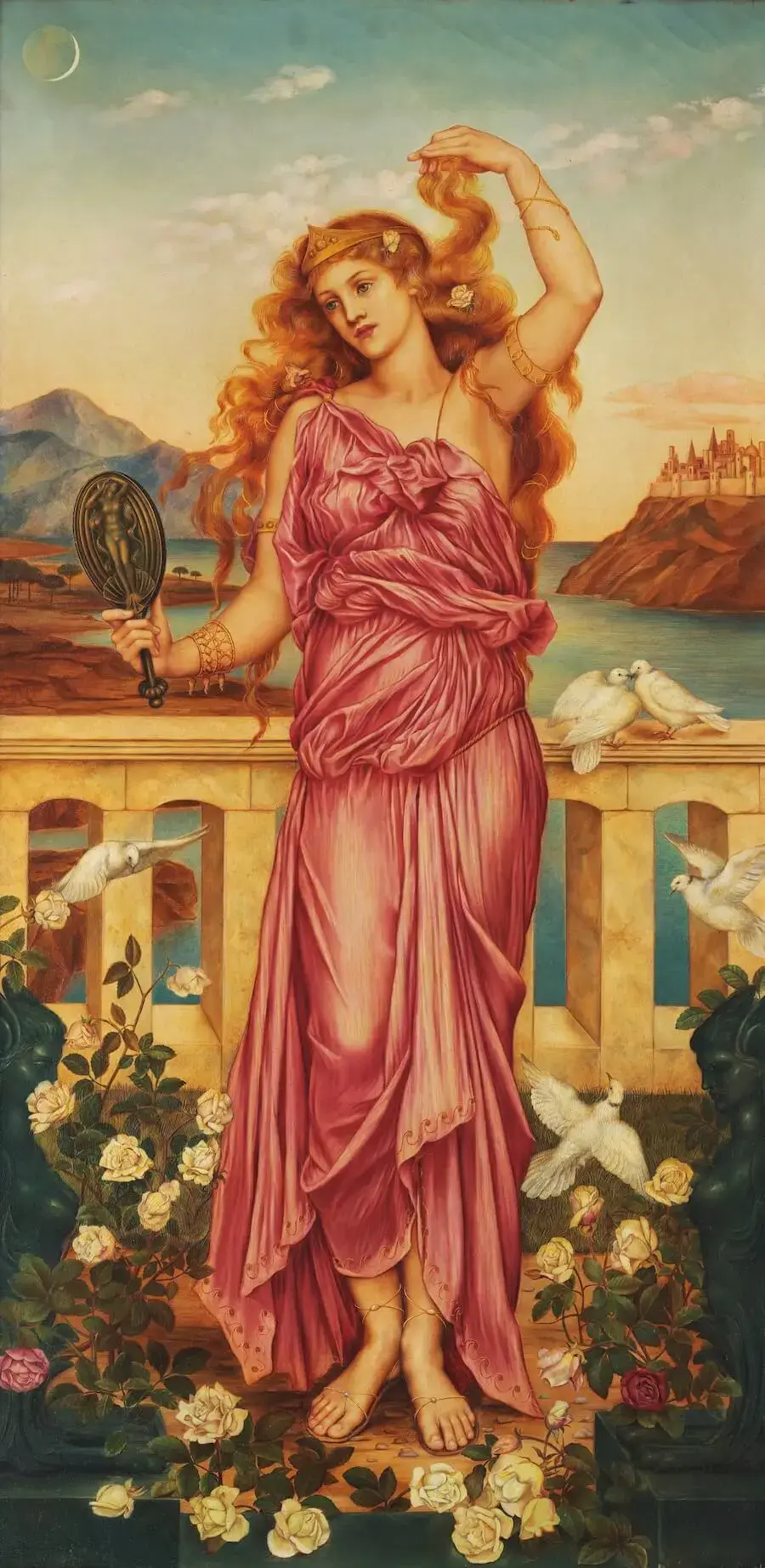
Helen of Troy by Evelyn De Morgan
Defining the Animus Archetype
The Animus is the male aspect within both the personal and collective unconscious of women.
Jung explains in Archetypes and the Collective Unconscious,4The Syzygy: Anima and Animus, Collected Works, 9ii, par. 28f.
Woman is compensated by a masculine element and therefore her unconscious has, so to speak, a masculine imprint. This results in a considerable psychological difference between men and women, and accordingly I have called the projection-making factor in women the animus, which means mind or spirit.
According to Jung, the Animus is a “psychopomp, a mediator between the conscious and the unconscious and a personification of the latter.”5Aion, “Phenomenology of Self.”
The Animus is the gatekeeper to the genuine spiritual life of a woman. He can seem so powerful and god-like that her conscious ego feels worthless and helpless by comparison.
The woman is often overwhelmed and shocked by the recognition of her Animus. As Jungian Robert A. Johnson explains,6Johnson, She: Understanding Feminine Psychology, 45.
If she sees that she has a godlike element within, the result is exhilarating, much like a peak experience. She is now in great danger of “falling in love with himself.”
It is through her confrontation and differentiation with her Animus that she initiates the process of building consciousness.
Jungian Barbara Hannah calls the Animus the “spirit of inner truth in women.”7Barbara Hannah, The Animus, 2011.
Jung and the Search for the Soul
A lot of Jung’s work was focused on man’s search for the soul. He strongly believed that we each have an autonomous personality that structures our inner world.
He further believed that this autonomous personality is projected out onto the world, shaping how we experience external reality.
To Jung, this personality represented the soul.
The challenge was the “soul” has religious overtones with a different meaning. For example, to many Christians, the soul represents the eternal aspect of the individual that inhabits the physical body.
This classic understanding of the soul differed from what Jung attempted to elucidate, so he landed on the Latin terms Anima and Animus instead.
Jung’s experience analyzing dreams, fairy tales, and myths led him to conclude that women experienced this inner spirit (Animus) as masculine while men experienced this Soul as feminine (Anima).
Anima and Animus in Jung’s Individuation Process
Jung categorized the process of psychological development into specific stages. The person starts off wearing various personas or social masks before initiating what he calls individuation.
Then, the person goes through three distinct phases:
- Getting to know and integrating the shadow
- Getting to know and integrating the Anima-Animus
- Arriving home at the Self
Each stage represents a fundamental archetype within the collective unconscious: the Shadow, the Anima-Animus, and the Self.
Shifting From the Shadow Phase to the Anima/Animus
Jung points out that compared to the confrontation with one’s shadow, encountering one’s Anima/Animus is an entirely more challenging matter.
He writes in Archetypes and the Collective Unconscious:
If the encounter with the shadow is the “apprentice-piece” in the individual’s development, then that with the anima is the “master-piece.”
Integrating one’s shadow challenges us to refine our self-identity. It forces us to accept many aspects of ourselves that we had cut off and disowned in the course of our early development.
Then, if we enter the Anima/Animus phase, another layer of one’s shadow is revealed, representing aspects of the opposite sex.
The encounter with one’s Anima/Animus often leads to intense emotional turmoil. This turmoil presents an opportunity to develop greater consciousness.
A Quick Note About Sex
Writing about topics like Anima and Animus in today’s political climate is like walking into a minefield.
The reality is that men and women are fundamentally different. The biology (sex) of men and women is very different.
Even the brains of men and women are different. For example, a recent study at Stanford Medicine used an AI model that clearly distinguished distinct brain organization patterns in men and women with 90% accuracy.8https://med.stanford.edu/news/all-news/2024/02/men-women-brain-organization-patterns.html
Additionally, the psyche of men and women are different as well.9See, for example, Robert A. Johnson’s He (1974) and She (1976).
More on this topic in Addendum 1 below.
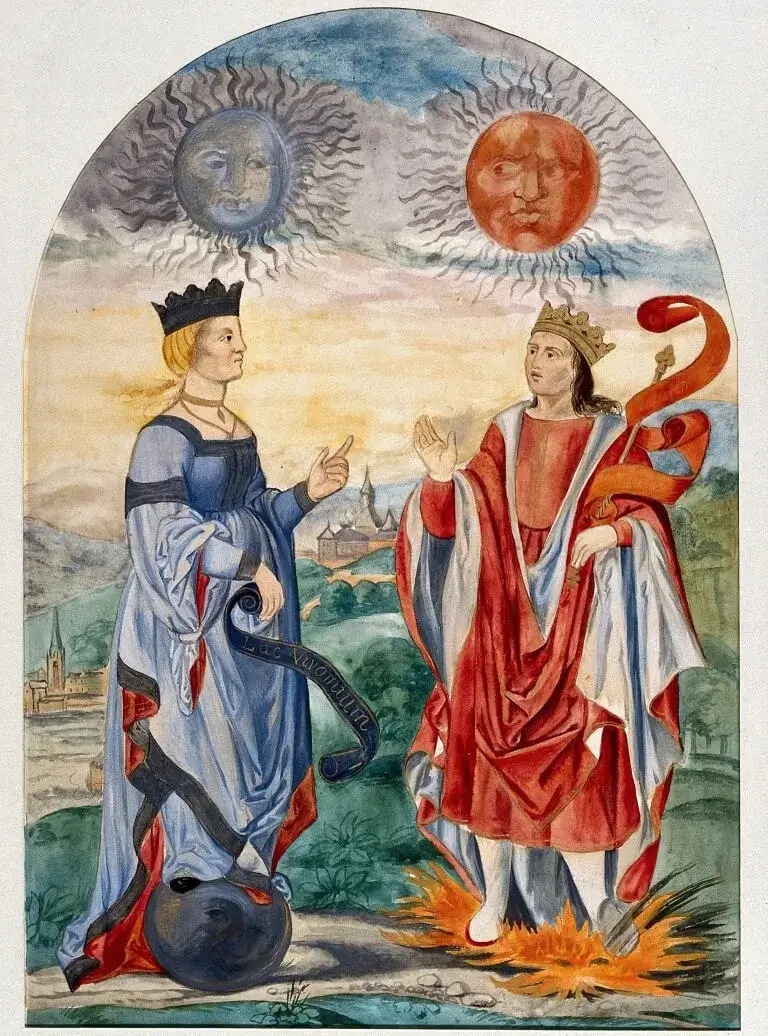
Splendor Solis, Plate 4 (The Lunar Queen and the Solar King)
by Salomon Trismosin
The Two Aspects of the Anima/Animus
There are two distinct aspects of the Anima/Animus:
- Personal: How we relate to qualities of the opposite sex via our Shadow
- Universal: How we relate to the collective unconscious: the archetype of Relationship itself
As one confronts various aspects of their Shadow, there is still a substantial divide between the unconscious and the conscious mind.
The First Stage of Anima/Animus Integration
The later stage of shadow work also represents the initial stage of the Anima/Animus. That is, the individual begins to confront aspects of their shadow related to the opposite sex.
Jung linked this psychic material to the unconscious content of the Anima/Animus.
This first stage represents aspects of our personal unconscious that we’re bringing to consciousness.
Jung writes,10Jung, Archetypes of the Collective Unconscious, CW 9i, par. 66.
“The anima is both a personal complex and an archetypal image of woman in the male psyche. It is an unconscious factor incarnated anew in every male child, and is responsible for the mechanism of projection. Initially identified with the personal mother, the anima is later experienced not only in other women but as a pervasive influence in a man’s life.”
In psychoanalytic language, a complex is like a bundle of emotions produced from one’s life experiences (memories).
The “personal complex” represents the psychic material that came from direct interactions with the boy’s mother and sisters. (And vice versa with the daughter and her father and brothers.)
The Power Inherent in Our Weakness: The Shadow as the Anima/Animus
As Jung points out in Psychological Types, we have different ways of processing information: thinking, feeling, sensing, and intuiting. We also each have a dominant function and an inferior function.
The dominant function represents our strengths and what’s comfortable and known to us.
Our inferior function represents our biggest blind spot. Because this function is our weakness, this way of processing information remains mostly unconscious to us until we begin integrating our Shadow (often out of necessity).
For example, for people who rely on thinking to interpret information, feelings represent their inferior function. For people who mainly trust their senses, intuition is their inferior function.
Our inferior function is the doorway to what Jung called our transcendent function—the entry point of the numinous experience of the collective unconscious.
Now, at this stage of the process, the unconscious through our dreams and active imagination presents us with images and figures of the opposite sex (representing our Anima/Animus).
The Second Stage of Anima/Animus Integration
At the core of any personal complex is at least one archetype. Even as you unravel all of your personal issues surrounding your mother, for example, there’s a still powerful emotional energy stored within you that has not been released.
The second stage of Anima/Animus integration represents the content of what Jung called the collective unconscious. That is, to Jung, Anima/Animus represents an impersonal and universal archetype: namely, the archetype of Relationship itself.
This archetypal relationship is fundamental to our life experience. It’s the relationship between oneself and the world—both inner and outer.
Why the Anima-Animus Relates to Sex & Gender
A child is born from a woman with the help of a man.
In the experience of the child, the first and most influential archetypal figures are the Mother and the Father.
Above all else, these two fundamental archetypes are the dominant influencing factors in the child’s life.
In the course of our development, we learn by observing others. In an ideal environment, the young child observes Mother and Father far more than anyone else.
If the child is a boy, he patterns himself after his father and learns to relate to the world via his mother. If the child is a girl, she learns to emulate her mother.
The influence of the Mother and Father archetypes on the child’s psyche—both as archetypal forces and as flesh-and-blood man and woman—cannot be overstated.
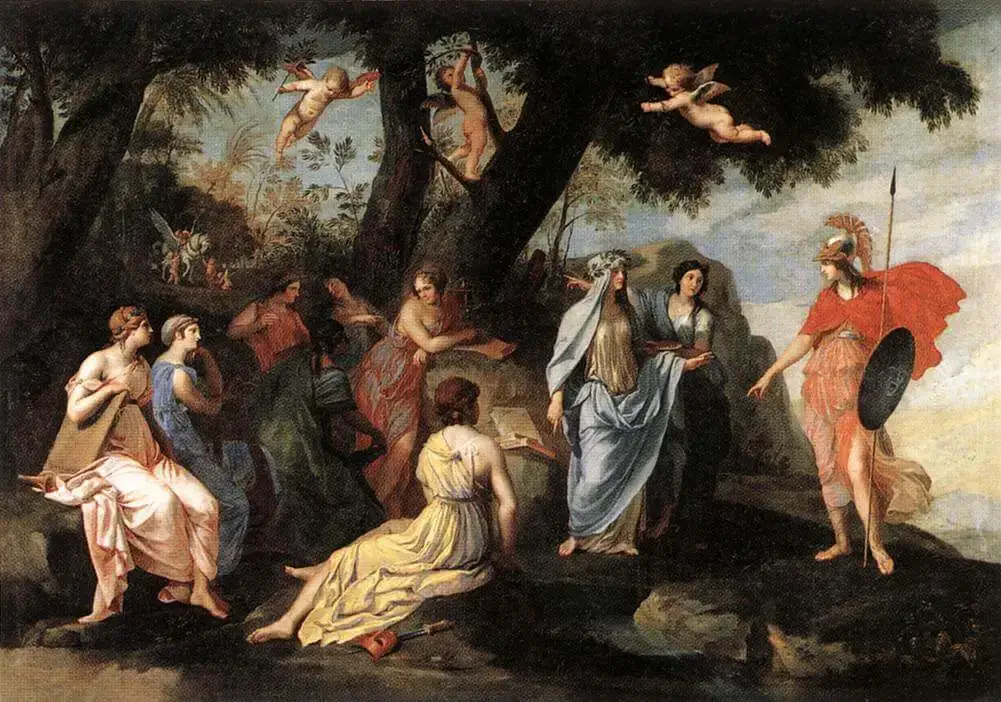
Minerva with the Muses by Jacques Stella
Two Ways of Approaching the Anima/Animus
One’s Anima/Animus can be brought to consciousness in two ways:
- Through one’s primary relationship with a flesh-and-blood spouse of the opposite sex, or
- Via direct inner work with one’s Anima-Animus
Oftentimes, we use a combination of the two.
A Union of Opposites
Following our psychologically, deep-rooted interaction with Mother and Father, the next most meaningful interaction in a person’s life is with a person of the opposite sex: his or her spouse. One’s spouse represents the archetype of Husband or Wife.
For example, a man will subconsciously seek his feminine through the courtship of a woman.
Because a young man is unconscious of his Anima, he will, without being aware of it, find himself attracted to a woman with certain familiar qualities of his Anima—his “Anima projection.” A woman, too, will find herself attracted to a man with “familiar” qualities—her “Animus projection.” (See below.)
That is, the union of a man and a woman is symbolic of the union of opposites. Your partner of the opposite sex represents a set of qualities that are largely unknown to you at the start of your relationship.
This symbolic marriage union provides the opportunity for you to bring to consciousness and integrate aspects of yourself that you may perceive in your mate (but presently, not within yourself).
The Search for Meaning at Mid-Life
Then, later, still feeling incomplete and still seeking validation after marriage, a man, in particular, is likely to go on a search for meaning.
This quest for meaning often occurs in mid-life that’s marked by a “mid-life crisis” or some kind of existential angst.
He may try to find meaning in the outside world (more material possessions or a mistress), but ultimately, the meaning he’s searching for cannot be acquired in the external.
Instead, he must turn inward to his Anima.
The Anima/Animus in Inner Work
The traditional approach to integrating one’s Anima/Animus in depth psychology is done via dream analysis.
Male characters in a woman’s dream may represent aspects one their Animus. Likewise, female characters in a man’s dream may represent their Anima.
Through dream analysis and active imagination, one can bring to consciousness various aspects of one’s Anima/Animus.
Anima Possession and Animus Possession Examples
In the course of one’s development, the Anima is likely to possess the man at times and the Animus will possess the woman. Let’s review some examples
Anima-Possession Examples
When a man is said to be “possessed by his Anima,” he becomes very moody, emotional, and unstable. Masculine qualities like logic, reason, steadiness, and critical thinking fall away and are replaced by irrational behavior.
As Jung explains,11CW, 9i, Archetypes of the Collective Unconscious.
The anima is a factor of the utmost importance in the psychology of a man wherever emotions and affects are at work. She intensifies, exaggerates, falsifies, and mythologizes all emotional relations with his work and with other people of both sexes … When the anima is strongly constellated, she softens the man’s character and makes him touchy, irritable, moody, jealous, vain, and unadjusted.
The now all-too-common effeminate male is essentially fully possessed by his Anima. That is, his Anima is fully in the driver’s seat, running the man’s personality and ego consciousness.
A man possessed by his Anima is wish-washy and dishonest. He is ruled by self-deception and lacks integrity.
An Anima-possessed man loves to argue and he will do so in a “very womanish way.”12Aion, “Phenomenology of Self” He becomes vane, touchy, and irritable.
Animus-Possession Examples
Possessed by the Animus, a woman loses her innate softness. From Jung:13“Anima and Animus,” Collective Works 7, par. 337.
A woman possessed by the animus is always in danger of losing her femininity.
An Animus-possessed woman becomes obsessed with power that can manifest as “social justice” or some other ideology.
Again from Jung,14Richard Wilhem, The Secret of the Golden Flower, 177.
The animus of the woman consists in a plurality of pre-conceived opinions, and is therefore far less susceptible of personification by one figure, but appears more often as a group or crowd.
A woman possessed by the Animus can not be reasoned with—no amount of logic can overcome her position.
When possessed by her Animus, a woman is never satisfied. Jung’s protege Marie-Louise von Franz explains:15Interpretation of Fairy Tales, 55.
The animus contributes to her unrest so that she is never satisfied; one must always do more for an animus-possessed woman.
Similar to a man possessed by his Anima, an Animus-possessed woman is difficult to be around. Again from von Franz,16Ibid, 66.
So we have a marvelous picture of the annoying and irritating side that a woman’s animus can produce. It shows how a grownup, intelligent woman can entangle herself in such a silly idiotic quarrel or discussion. The irritated animus loses his sense of humor and is ungrateful and full of power.
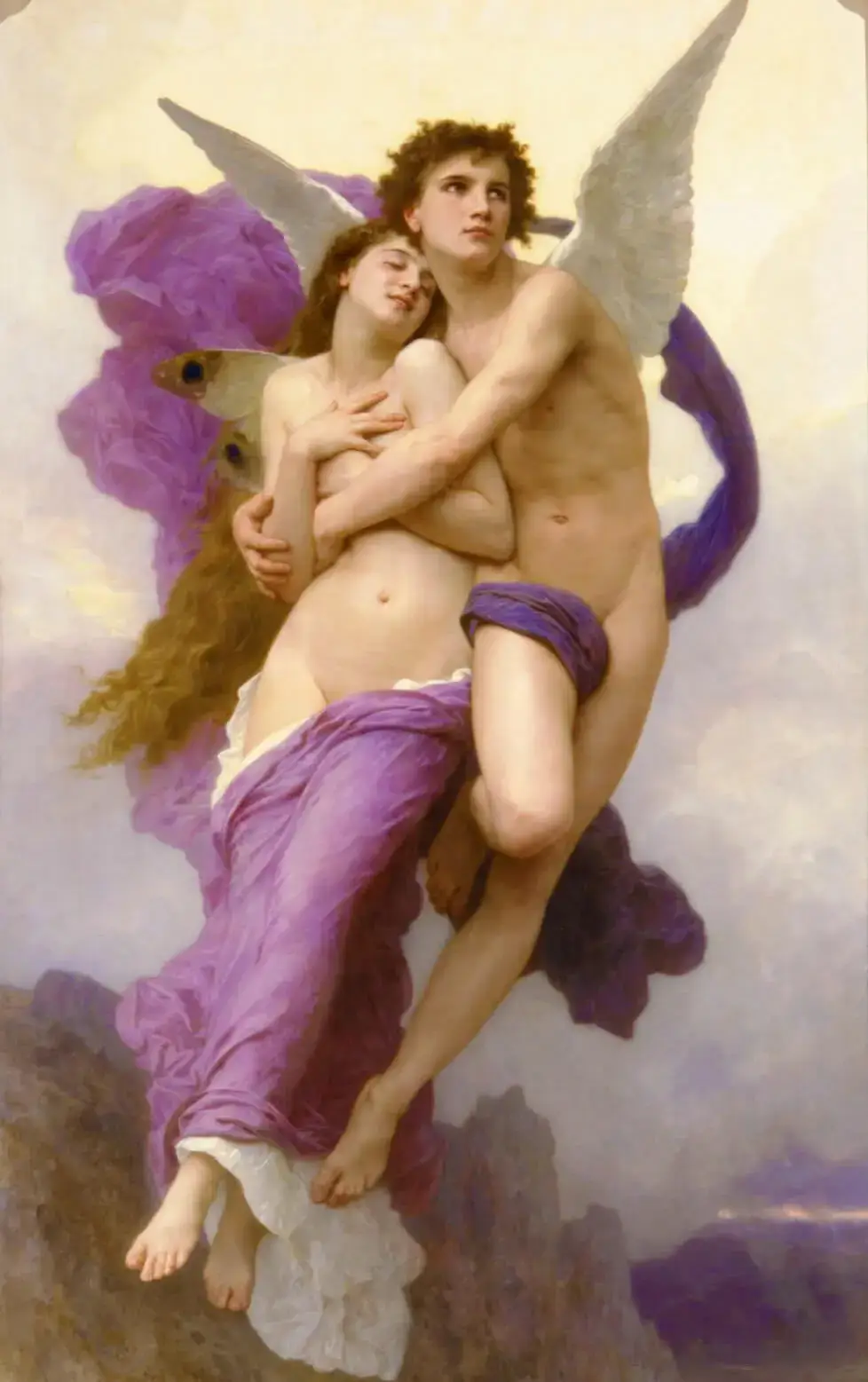
The Abduction of Psyche (Psyche & Eros) by William-Adolphe Bouguereau
When Animus and Anima Meet
The Anima-Animus wreck havoc in relationships, for as Jung observed,17C.G. Jung, Aion, “Phenomenology of Self”
No man can converse with an animus for five minutes without becoming the victim of his own anima.
Jung continues,18Aion, “Phenomenology of Self”
When animus and anima meet, the animus draws his sword of power and the anima ejects her poison of illusion and seduction. The outcome need not always be negative, since the two are equally likely to fall in love.
In fact, the proverbial “love at first sight” occurs when Animus and Anima meet (see below).
The challenge is that the Animus-Anima relationship, although filled with intense highs and lows, is also filled with animosity driven by sentimentality. The intense emotionality of this “union” often leaves the couple in a relationship spent.
Anima/Animus Projection Example: Falling in Love
As Jung explains in his commentary from The Secret of the Golden Flower:19Richard Wilhelm, The Secret of the Golden Flower, 117.
Deeper introspection, or ecstatic experience, reveals the existence of a feminine figure in the unconscious, therefore the feminine name, anima, psyche, ame, Seele. The anima can also be defined as an image, archetype, or as the resultant of all the experiences of man with woman. This is the reason the anima image is projected on the woman.
Perhaps the best way to understand the nature of Anima/Animus is through the experience of “falling in love.”
When men and women fall in love, it’s both intoxicating and shocking. All prior rules fall away. The lovers feel like they can’t exist without each other. They think about each other constantly and can’t bear to be apart for long.
In the eyes of the lover, their mate represents perfection. This experience occurs when we project our Anima/Animus onto our partner.
Of course, no one is as wonderful as we think when we fall in love. That intoxicating feeling can only occur when we project our own inner feminine/masculine figure onto a flesh-and-blood human being.
Authentic human love between a man and a woman can only develop after we reclaim our projection of our Anima/Animus and learn to relate to our partner as a human being.
That is, as Jungian Robert A. Johnson beautifully highlights in We (1945), romantic love is archetypal and illusory. Romantic love represents Anima/Animus projection while human love involves daily mundane relating to one another.
Integration of Masculine and Feminine Energy
At their core, the Anima and Animus archetypes represent qualities that are distinctly associated with feminine and masculine energy, respectively.
For example, as integral philosopher Ken Wilber highlights in A Brief History of Everything (2001), the masculine seeks autonomy while the feminine seeks communion.
Masculine energy makes a man strong, effective, competent, and useful. But it is his inner feminine that inspires his strength, meaning, and value. Because it is difficult for a man to seek these feminine qualities in himself, he most often identifies them externally in his wife, mother, sister, and daughter.
The feminine or Anima represents a man’s feeling function. As Jung often noted, society itself is suffering from a wounded feeling function. It’s understandable. Objectivity requires us to stand apart. Doing so instantly wounds the feeling function that is based on relatedness (subjectivity).
The masculine principle is driven by order and form. The feminine principle is more chaotic and diffuse in nature.
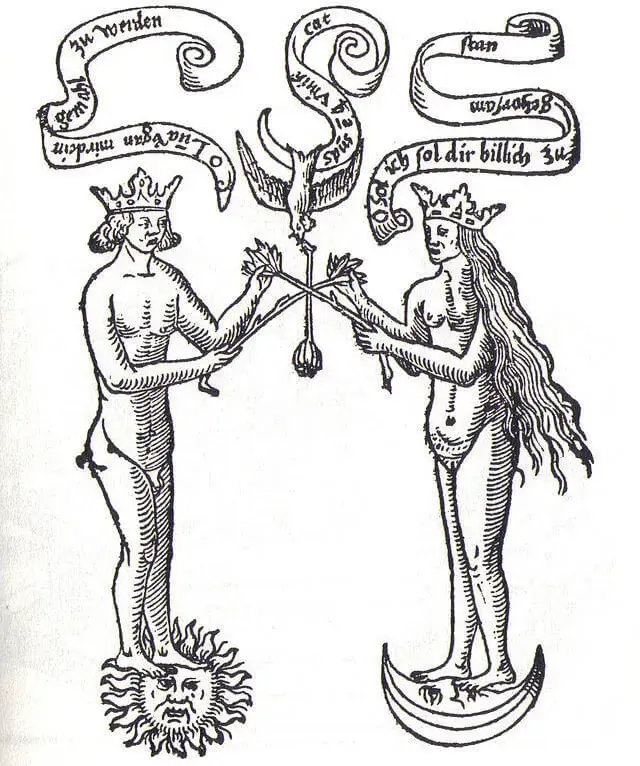
Rosarium Philosophorum: integrazione Anima e Animus
Integrating Feminine Energy for Men
Integrating the Anima (feminine energy) for a man doesn’t mean that the man becomes more feminine.
Instead, the man learns to include certain qualities traditionally associated with women, like sensitivity, warmth, relatedness, and receptiveness.
These feminine qualities must be integrated without a man losing his core masculinity. Otherwise, instead of becoming more complete and whole, he becomes more one-sided in the opposite direction.
Integrating Masculine Energy for Women
Similarly, integrating the Animus (masculine energy) for a woman doesn’t mean that the woman loses her feminine nature.
Instead, the woman learns to adopt the qualities associated with masculinity including discernment (via reason), directedness, and assertiveness.
Jung explains in Alchemical Studies, “The animus is the masculine thinking in a woman.”20Jung, Collected Works 13, “The Philosophical Tree,” 267.
An integrated Animus provides women with clear thinking and the ability to take responsible action in the external world.
Integrating the Anima/Animus brings one’s personality closer to wholeness.
Appendix 1: The Attack on Masculinity and Femininity
Given the nature of this topic of Anima and Animus and today’s political climate in the West, I feel compelled to address some common myths and distortions regarding masculinity and femininity.
Alpha, Beta, and the Anima
I generally don’t use these terms (Alpha and Beta) because, from my perspective, they represent two sides of the same coin.
Both Alpha and Beta males represent opposing extremes of masculinity—neither represents healthy, integrated masculinity.
(To me, Sigma is the closest to healthy masculinity. The qualities of Sigma also most closely align with Maslow’s characteristics of self-actualizing individuals—i.e., positive mental health.)
Alpha, the active side, is driven by leading, competing, achieving, dominating, and winning (strong masculine energy).
Beta, the passive side, is driven by following, compliance, fitting in, and submissiveness (a lack of masculine energy).
Are Beta Males “More Evolved”?
In light of the above, the reader may innocently assume that the Beta male is more integrated with their Anima and therefore more developed. This, however, is most definitely NOT the case.
Beta males are more likely “Anima possessed” (as described above). Betas also more often have a Mother complex where they haven’t psychologically separated from their mothers in adulthood. (Results include wanting/needing to be cared for by another person or the State.)
The Beta male is arguably in a FAR worse condition as he lacks the masculine “Warrior energy” necessary to begin his masculine development.
For a man to integrate his Anima he must first constellate his internal power around his innate masculinity. Otherwise, he has no foundation from which to begin this “masterpiece.”
A Beta male is stuck in the passive shadow archetypes as described by neo-Jungian Robert Moore.21Moore and Gillette, King Warrior Magician Lover, 1991.
He is more prone to qualities like cowardice, groupthink, manipulation, and passivity. Beta males lack discipline, and any semblance of internal structure or moral aptitude (lacking in integrity).
Are Alpha Males “Toxic”?
The current social order has vilified Alpha males as “toxic masculinity” and celebrates Beta males as more “modern and evolved” masculinity. This represents a pure inversion of truth.
Certainly, Alpha males are out of balance. An obsession with winning and achievement is a clear form of neurosis.
However, Alpha males are also more likely to have a strong moral code built on personal discipline. They are natural protectors and defenders.
Beta males, in contrast, are easily manipulated because they lack internal structure. There’s a reason why Beta males, for example, are “selected” for public office—especially in the West.
In the presence of an Alpha male, a woman can more easily access her innate femininity. The opposite is the case while in the presence of Beta males.
Femininity Lost
It is not only the attack on strong masculinity that we must endure in our current world. True femininity was been targeted for generations as well.
Genuine feminine softness and nurturance are now perceived as a kind of weakness. Instead, women especially in the Western world, are conditioned to compete with men. “Anything you can do, I can do better.”
Even simply stating this can get me labeled as “sexist” or a “misogynist.” Nothing can be further from the truth.
As I stated above, men and women are fundamentally different. These differences represent our strengths—not our weaknesses. And when women compete to be like men it can only lead to the deterioration of society. It weakens both men and women.
Jungians provide loads of commentary explaining why femininity is lost in modern times.22See, for example, Robert A. Johnson’s Femininity Lost and Regained. In my opinion, all of this discourse, while insightful, clearly misses the mark.
The Engineering of Gender Confusion
I have to be careful about what I say here as this topic can anger the “search engine gods” who can make this guide (and even this website) disappear into the ether.
But for those interested, for example, do you know who started the feminist movement?
Not the figureheads you can read about on a Wiki page, but who initiated and funded this movement and why? That is, who are the puppet masters?
(Hint: Rock-e-feller family and their related N-G-Os like the Tav-is-stock In-stit-ute funded by the oligarchs of the City of Lon-Done.)
That is, the attack on both healthy masculinity AND healthy femininity is NOT a natural social or cultural phenomenon. It is NOT an expression of “progress” or “evolution.” It is an intentional, multi-generational psychological operation done with malice and contempt.
Although this may upset a select number of readers, virtually all of the “gender confusion” plaguing the Western world has been carefully socially en-gineer-ed since before World War II.
A Direct Attack on the Human Psyche
As I’ve mentioned elsewhere, the world is run by the shadow of the Magician archetype—the Detached Manipulator.
Two different groups of people use the insights from depth psychology:
- Analysts and psychologists attempting to help heal the individual’s psyche via private practice.
- N-G-Os and “think tanks” (run and funded by psychopaths) that co-opt these insights to manipulate the social order.
This has been the case even before the first wave of psychology (psychoanalysis).
The psyche of mankind has been under direct, intentional attack for centuries (if not millennia). The deterioration of the nuclear family is most definitely not accidental. It is the result of psychological warfare and the conscious manipulation of the collective psyche.
A careful understanding of how the psyche works illustrates how easy it is to create trauma and throw the psyche into chaos—especially for those in positions of power with endless resources.
What’s stated above is not difficult to prove. It is already well-documented. An earnest researcher will arrive at this conclusion. But sadly, I don’t see any Jungians or others in the field making these connections.
Going forward, restoring a man’s masculinity and a woman’s femininity is up to the individual.

Appendix 2: Jung’s Commentary on The Secret of the Golden Flower
Any Jungian or devout reader of Jung has likely come across Jung’s commentary in the Taoist classic, The Secret of the Golden Flower, translated by Richard Wilhelm. Wilhelm translated numerous Chinese texts including the I Ching, to which Jung wrote the foreword.
When I first read Jung many years ago, I was taken aback by The Secret of the Golden Flower with Jung’s extensive commentary.
This commentary discusses the concepts of Anima and Animus and how they relate to Taoist principles.
I recall reading this book numerous times. In fact, it was partly what got me interested in Taoist literature in the first place.
Three Points of Contention Highlighted by Thomas Cleary
Eastern scholar Thomas Cleary highlights three valid points of contention in his later translation and commentary on The Secret of the Golden Flower (1991).
First, Richard Wilhelm clearly didn’t have a solid understanding of Taoist or Buddhist concepts or philosophy. (It’s also likely that he had a cultic version of the Golden Flower manuscript.)
Second, Jung assumed that the ancient Chinese arrived at their psychology “only through abnormal psychic states.” This is absolutely incorrect. The Taoist system is a highly grounded and developed psychology designed to help the individual organize their psyche via stabilization practices—not altered states of consciousness.
Third, Jung made lots of parallels between his analytical psychology and the Taoist principles outlined in Wilhelm’s translation of The Golden Flower. Many of these parallels are not valid.
What Jung Thought the Higher Soul and Lower Soul Means
As an illustration, let’s examine a passage from Thomas Cleary’s far more accurate translation of The Secret of the Golden Flower:23Cleary, The Secret of the Golden Flower, 15.
“Then there is the higher soul, which is where the spirit is concealed. The higher soul resides in the eyes during the day and lodges in the liver at night. When it resides in the eyes, it sees; when it lodges in the liver, it dreams.
“Dreams are the roaming of the spirit. It traverses the nine heaves and nine earths in an instant. If you are dull and depressed on awakening, that is a sign of clinging to the body, which means clinging to the lower soul.”
Wilhelm used the term Anima for the lower soul and Animus for the higher soul. In his introduction, Wilhelm calls the Anima feminine and the Animus masculine.
Jung then exaggerates this distortion in his commentary on feminine and masculine psychologies, which have no connection with the source material.
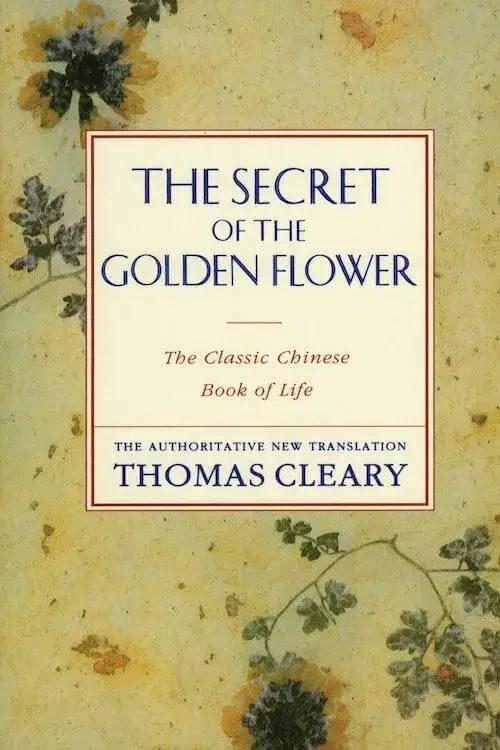
What the Higher Soul and Lower Soul in Taoist Thought Means
As Thomas Cleary explains in his commentary:24Ibid, 83.
The idea that the body is created by attention is typically Buddhist, but it is also found in the schools of Taoism influenced by Buddhism. In this text, the “lower soul” simply means the feeling of being a solid body physically present in the solid world. As long as this feeling persists, the state of the lower soul (which includes visceral emotions) is subject to random environmental influences. Therefore the text speaks of “interrupting consciousness” in the sense of withdrawing attention from the feeling of solidity in order to free it from the bonds of external influences …”
That is, this passage from the Golden Flower and many others like it, are not referring to Jung’s concepts of the Anima and Animus. The Higher Soul and the Lower Soul do not equate to the Animus and Anima.
For any Jungians reading this, I highly recommend reading Thomas Cleary’s authoritative translation of The Secret of the Golden Flower to see just how confused both Wilhelm’s translation and Jung’s commentary are.
Why is This Relevant?
That there are inner feminine qualities within a man and inner masculine qualities within a woman is something that becomes readily apparent to anyone who examines their psyche.
Also, without question, many aspects of one’s shadow relate to one’s parent of the opposite sex.
However, I also think there are a lot of considerable issues related to Jung’s concepts of Anima-Animus. Perhaps that’s why this is one of the most complex and misunderstood concepts within Jungian lore.
Comparing Cleary’s translation to Wilhelm’s plus Jung’s commentary can be instructive.
Finally, I will point out that ancient Taoists and Chan Buddhists specifically warned not to get involved with the images (archetypes like Anima and Animus).
Their psychologies direct the individual to stabilize their energy and govern their mind from a position of neutrality. These ancient texts often speak of the importance of holding to the Center instead.
Related Books on the Anima and Animus Archetypes
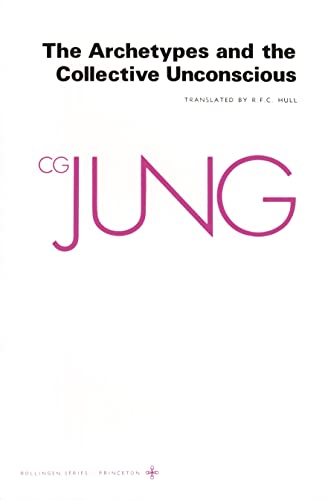
The Archetypes of the Collective Unconscious
by C.G. Jung
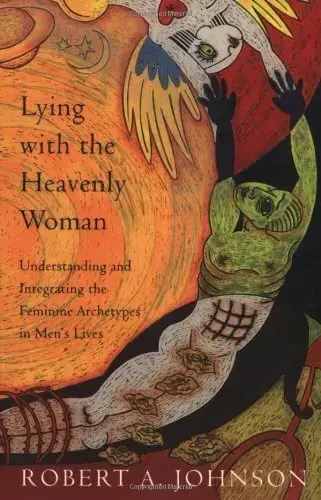
Lying with the Heavenly Woman
by Robert A Johnson
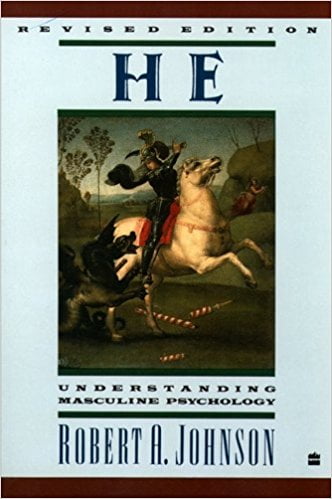
He: Understanding Masculine Psychology
by Robert A Johnson
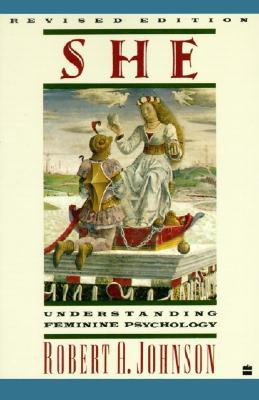
She: Understanding Feminine Psychology
by Robert A Johnson
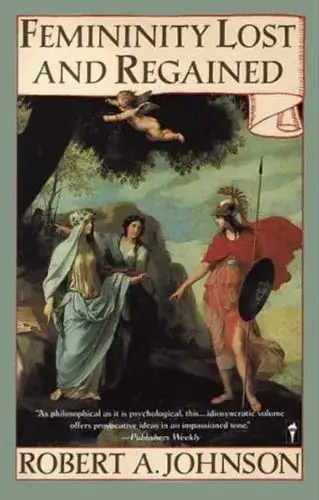
Femininity Lost and Regained
by Robert A Johnson
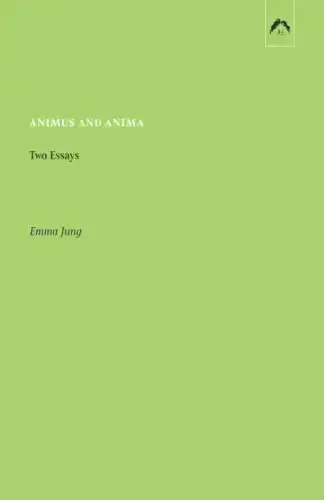
Animus and Anima
by Emma Jung
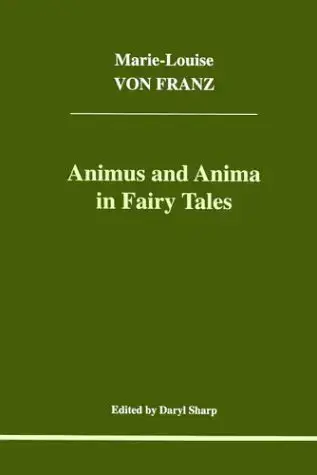
Animus and Anima in Fairy Tales
by Marie-Louise von Franz
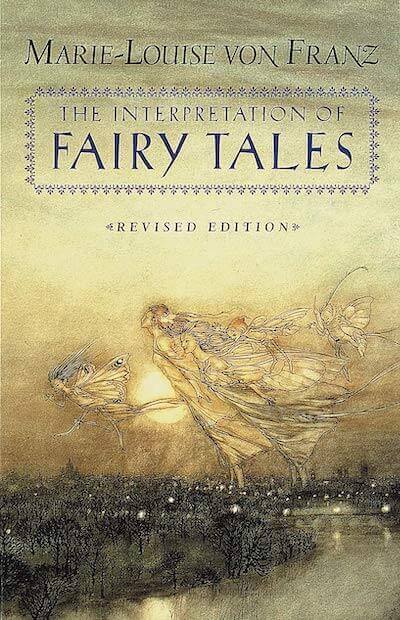
Interpretation of Fairy Tales
by Marie-Louise von Franz
Read Next
A Beginner’s Guide to Classic Jungian Archetypes
A Definitive Guide to Jungian Shadow Work: How to Get to Know and Integrate Your Dark Side
The Individuation Process: A Beginner’s Guide to Jungian Psychology
